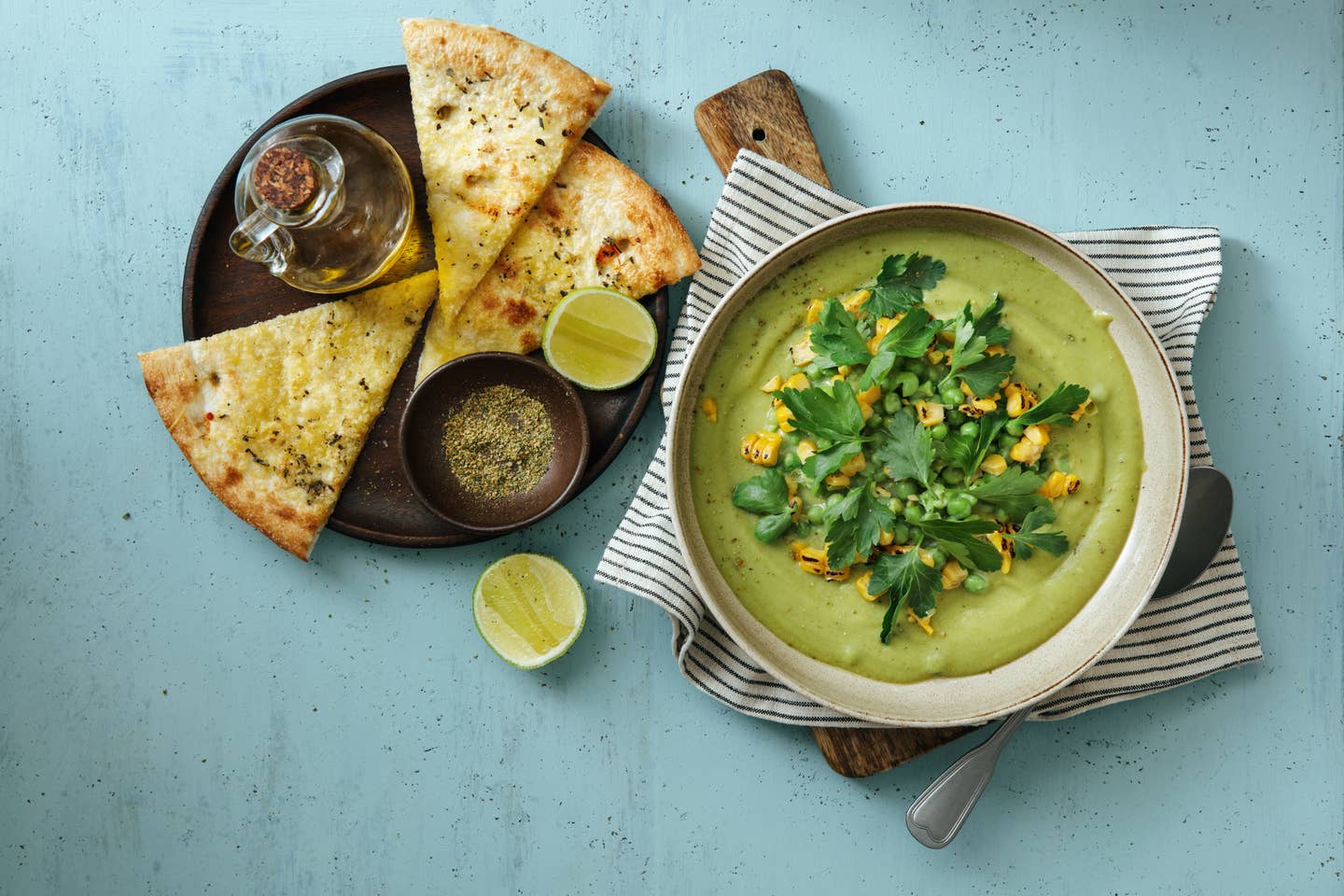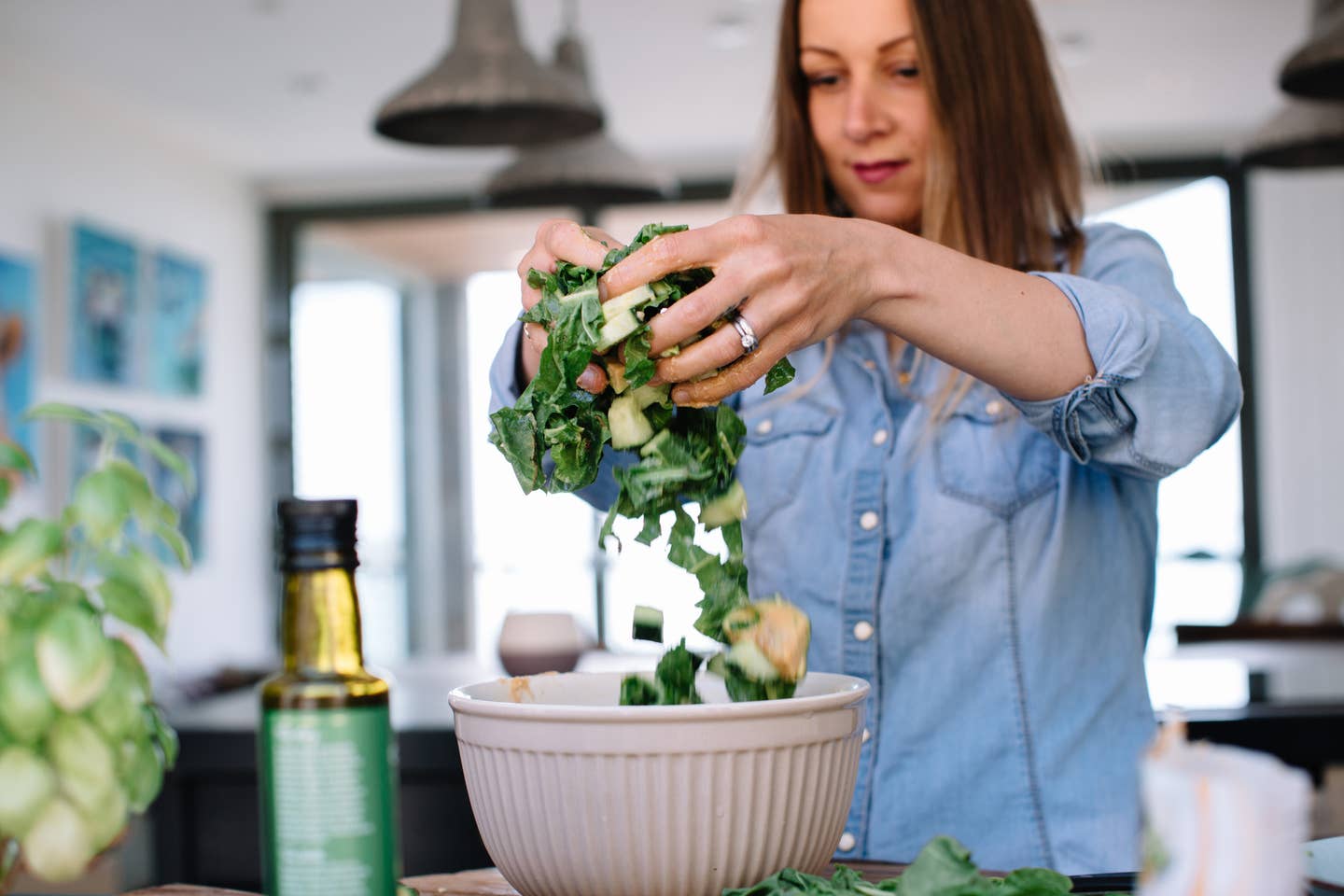
5 Healthy Weight Loss Recipes From Dr. Greger’s How Not to Diet Cookbook
Do you know the saying “the way to someone’s heart is through their stomach?" I agree whole-heartedly—and then some! I’ve written two cookbooks as companions to How Not to Die and How Not to Diet, which I’m so thankful to be able to say were New York Times’ bestsellers, and both culinary collections are more than just labors of love. The How Not to Die Cookbook and The How Not to Diet Cookbook also help you keep your heart, mind, and bodies as healthy as can be and your stomachs as fulfilled and happy as can be.
In How Not to Die, I compiled the healthiest of the "Green Light" foods—foods of plant origin from which nothing bad has been added and nothing good has been taken away—into my Daily Dozen checklist of foods I encourage people to try to fit into their daily routines. As the feedback poured in from people who read my book, two themes of complaints arose. The first was that it was just too much food.
There was no way they could eat all that food in one day. In response, I explained that the Daily Dozen was aspirational, something to shoot for, just a tool to inspire people to include some of the healthiest of healthy foods into their daily diets. The vast volume of food I prescribed was on purpose. I was hoping that by telling people to eat so much healthy stuff, it would naturally crowd out some of the less-healthy stuff. After checking off all twenty-four servings in the Daily Dozen, there’s only so much room left for a pepperoni pizza.
Ironically, the second major complaint we got is that it doesn’t have enough calories. I had to explain that the Daily Dozen just represented the minimum I encourage people to eat, not the maximum, and that, certainly, training athletes requiring thousands of more calories would have to eat much more. This all got me thinking, though. Too much food but too few calories? Sounds like the perfect weight-loss diet!
The Daily Dozen is by definition all Green Light foods, all whole plant foods, so that right there bakes in all seventeen of the ideal weight-loss diet ingredients I introduce in How Not to Diet. What about the calorie count? A systematic review of successful weight-loss strategies concluded that given the metabolic slowing and increased appetite that accompanies weight loss, to achieve significant weight loss, calorie counts may need to drop as low as 1,200 calories a day for women and 1,500 calories a day for men. I set up a spreadsheet and tried a bunch of common foods in each of the categories, and what do you know: The Daily Dozen averages about 1,200 calories, with the higher-calorie food choices nailing 1,500 calories.
I made a number of modifications to optimize the Daily Dozen for weight loss, based on the best available research and findings I presented in How Not to Diet and came up with Twenty-One Tweaks to accelerate the path to reduction. Of course, you don’t have to hit all the weight-loss boosters every day. You don’t even have to hit any. A healthy diet, as encapsulated by the Daily Dozen, should be all you need to lose as much weight as you want, but the more of these extra tweaks you can hit, the more successful you may be.
The How Not to Diet Cookbook fits as many of these combinations together into delicious recipes and hearty meal plans, and I’ve included four of my absolute favorites from that collection. I hope you love them as much as I do.
Make eating healthy a lifelong habit and be consistent for your best heart health
And, remember, it’s not what you eat today that matters, or tomorrow, or next week, but rather what you eat over the next months, years, and decades, so you have to find lifestyle changes that fit into your lifestyle. Permanent weight loss requires permanent dietary change—healthier habits just need to become a way of life. And if it’s going to be life-long, you want it to lead to a long life. Thankfully, the single best diet proven for weight loss may just so happen to be the safest cheapest way to eat, for the longest, healthiest life. Indeed, we have experimental confirmation: A whole-food, plant-based diet was found to be the single most effective weight-loss intervention ever published in the medical literature, proven in a randomized controlled trial with no portion control, no calorie counting, no exercise component—the most effective ever—and the very same diet has been proven to prevent, treat, and even reverse some of our leading killer diseases.
So, feed your heart, mind, and body the way you deserve to be fed—with the best foods for your health, vitality, and longevity. Plants FTW!
Turmeric Quinoa and Red Beans With Cauliflower and Chard
Makes 4 servings
Level of Difficulty: Easy
Total Time: This recipe takes less than thirty minutes to get on the table, thanks to quick-cooking quinoa.
Ingredients
- 1 cup uncooked quinoa, well rinsed and drained
- ¾ teaspoon ground turmeric
- 2 cups salt-free vegetable broth or water
- 1 red onion, chopped
- 3 garlic cloves, minced
- 3 cups small cauliflower florets
- 1 teaspoon ground coriander
- 1 teaspoon smoked paprika
- ½ teaspoon dried thyme
- ½ teaspoon ground cumin
- ¼ teaspoon ground black pepper
- ¼ teaspoon red pepper flakes (optional)
- 1½ cups cooked or 1 (15-ounce) BPA-free can or Tetra Pak salt-free dark red kidney beans, drained and rinsed
- ½ cup salt-free vegetable broth
- 8 ounces (about 6 cups) chard, kale, or spinach, tough stems removed, chopped
Instructions
- Combine the rinsed quinoa, turmeric, and the 2 cups of vegetable broth or water in a saucepan over medium-high heat and bring to a boil. Lower the heat to a simmer and cook until the liquid is absorbed about 15 minutes. Remove the saucepan from the heat, cover, and set aside for 5 minutes to allow the quinoa to steam. Uncover and fluff the quinoa with a fork. Set aside and keep warm.
- While the quinoa is cooking, heat ¼ cup of water in a large saucepan over medium heat. Add the onion and garlic and cook for 5 minutes to soften, stirring occasionally. Stir in the cauliflower, coriander, paprika, thyme, cumin, black pepper, and red pepper flakes (if using).
- Add the kidney beans and the ½ cup of vegetable broth and bring to a boil. Lower the heat to a simmer, cover, and cook for 8 minutes. Add the chard, stirring to wilt. Simmer until the vegetables are tender, about 5 minutes longer. To serve, spoon the quinoa into shallow bowls and top with the beans and vegetables. Serve hot.
Root Vegetable Mac 'N Cheese
Root vegetable lovers rejoice! This dish not only features chunks of roasted root vegetables, but there are pureed root veggies in the sauce, too. Follow the recipe closely, or use your own combination of root vegetables, including rutabaga and celery (though you may want to avoid beets unless you want pink mac ’n cheese). You will need about 3 pounds in total. And, for even more oomph, enjoy this comfort food over a beautiful pile of steamed greens.
Makes: 4 servings
Level of Difficulty: Moderate
Ingredients
For Root Vegetables
- 1 parsnip, cut into 1-inch dice
- 1 carrot, cut into 1-inch dice
- 1 sweet potato, cut into 1-inch dice
- 1 Yukon Gold potato, cut into 1-inch dice
- ½ cup chopped yellow onion
- ½ teaspoon onion powder
- ¼ teaspoon ground black pepper
For the Mac ’n Cheese
- 2 cups salt-free vegetable broth, or more as needed
- ½ cup nutritional yeast
- 1 tablespoon fresh lemon juice
- 1 teaspoon white miso paste
- 1 teaspoon salt-free stone-ground mustard
- ½ teaspoon onion powder
- ½ teaspoon garlic powder
- ½ teaspoon smoked paprika
- ¼ teaspoon grated fresh turmeric or ¼ teaspoon ground
- 8 ounces whole-grain or bean-based elbow macaroni or other bite-size pasta of your choice
Instructions
For the Root Vegetables
- Preheat the oven to 425ºF. Line two baking pans with silicone mats or parchment paper.
- Divide the vegetables evenly in a single layer between the two prepared pans. Sprinkle with onion powder and black pepper. Roast until the vegetables are tender and slightly caramelized, 45 to 60 minutes, turning the veggies with a metal spatula about halfway through. When the vegetables are done roasting, remove them from the oven and set them aside.
For the Mac ’n Cheese
- Put 2 cups of the roasted vegetables into a high-powered blender. Add the vegetable broth, nutritional yeast, lemon juice, miso paste, mustard, onion powder, garlic powder, paprika, and turmeric. Blend until very smooth. Taste and adjust the seasonings, if necessary. Add more broth if needed to reach your desired consistency. Set the sauce aside.
- Cook the macaroni according to package instructions in a large pot of boiling water until al dente. Drain well and return to the pot. Add the remaining roasted vegetables and the sauce, stirring gently over low heat to combine and heat through. Serve hot.
Date Syrup
Date Syrup is great to have on hand when you need a whole food sweetener.
Makes: 1½ cups
Level of Difficulty: Easy
Ingredients
- 1 cup pitted dates
- 1 cup boiling water
- 1 teaspoon fresh lemon juice
Instructions
- Combine the dates and water in a heatproof bowl, and set aside for 1 hour to allow the dates to soften. Transfer the dates and the soaking water to a high-powered blender. Add the lemon juice and process until smooth. Transfer to a glass jar or other container with a tight-fitting lid. Store the syrup in the refrigerator for 2 to 3 weeks.
Corn Chowder
This chowder can be as thick and creamy as you like, depending on how much of the soup you puree.
Makes 4 servings
Ingredients
- 1 yellow onion, chopped
- 2 celery ribs, chopped
- 2 russet potatoes, diced
- ¼ cup nutritional yeast
- ½ teaspoon smoked paprika
- ½ teaspoon dried thyme
- ¼ teaspoon ground black pepper
- 4 cups light salt-free vegetable broth
- 1 pound fresh or thawed frozen corn kernels
- 2 teaspoons white miso paste
- 2 teaspoons fresh lemon juice
- 1 tablespoon minced fresh parsley
- Salt-Free Hot Sauce (in the cookbook), to serve (optional)
Instructions
- Heat ¼ cup of water in a large pot over medium heat. Add the onion, celery, and potatoes.
- Cover and cook, stirring occasionally, for 5 minutes, or until softened.
- Stir in the nutritional yeast, paprika, thyme, black pepper, and vegetable broth.
- Bring to a boil, then lower the heat to low, stir in the corn, and simmer for 20 minutes, or until the vegetables are tender.
- Scoop 2 cups of the soup solids into a high-powered blender, add the miso paste, and blend until smooth.
- Stir the pureed mixture back into the soup.
- Add the lemon juice, then taste and adjust the seasonings, if needed.
- If you prefer a thicker chowder, puree another cup of soup solids and add it back to the pot.
- Heat the soup until hot and serve sprinkled with parsley and with Salt-Free Hot Sauce on the side (if using).
Baked Apples With Walnuts and Goji Berries
These luscious baked apples taste like apple pie, but aren’t bogged down with added sugar, flour, and fat. A bonus is how great your house will smell while they’re baking.
Makes 4 servings
Ingredients
- 3 tablespoons goji berries, soaked in warm water for 15 minutes and then drained
- ⅓ cup chopped walnuts
- 1 tablespoon Date Syrup (see recipe below)
- 1½ teaspoons ground cinnamon
- 4 large, firm baking apples, washed and cored
- 1 tablespoon fresh lemon juice
Instructions
- Preheat the oven to 350ºF. Place the goji berries in a food processor and add the walnuts, Date Syrup, and cinnamon, then pulse until well mixed. Set aside.
- Peel the top third of each apple. Rub the exposed part of the apples with the lemon juice to prevent discoloration.
- Stuff about 2 tablespoons of the goji mixture into the center of each apple and arrange the apples upright in a small, shallow baking dish. Pour ½ cup of water around the apples. Cover and bake until tender, about 1 hour. Serve warm.
Excerpted The How Not To Diet Cookbook: 100+ Recipes for Healthy, Permanent Weight Loss by Michael Greger. Copyright © 2020 by Michael Greger. Reprinted with permission from Flatiron Books. All rights reserved. Photography by Antonis Achilleos.
More From The Beet






